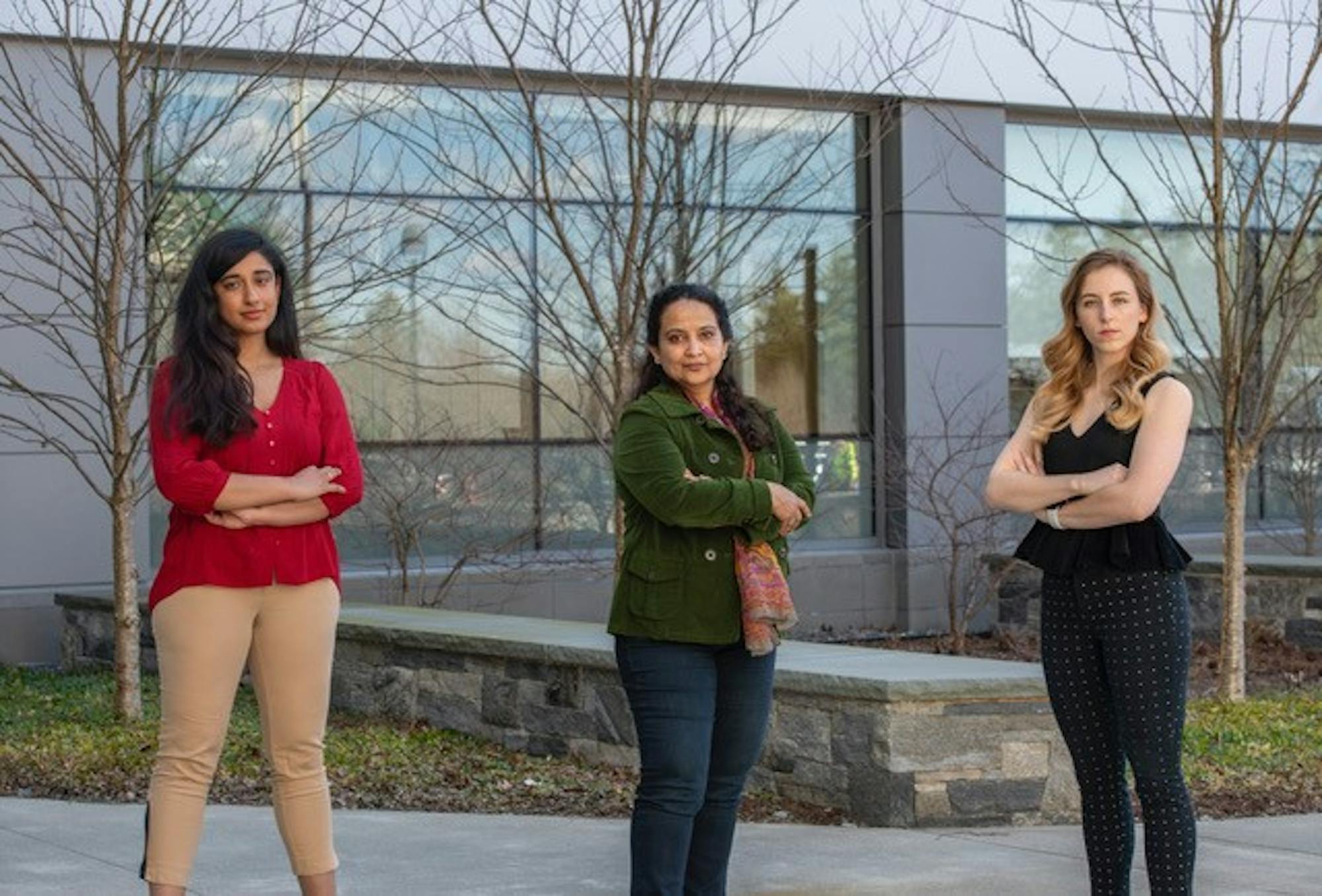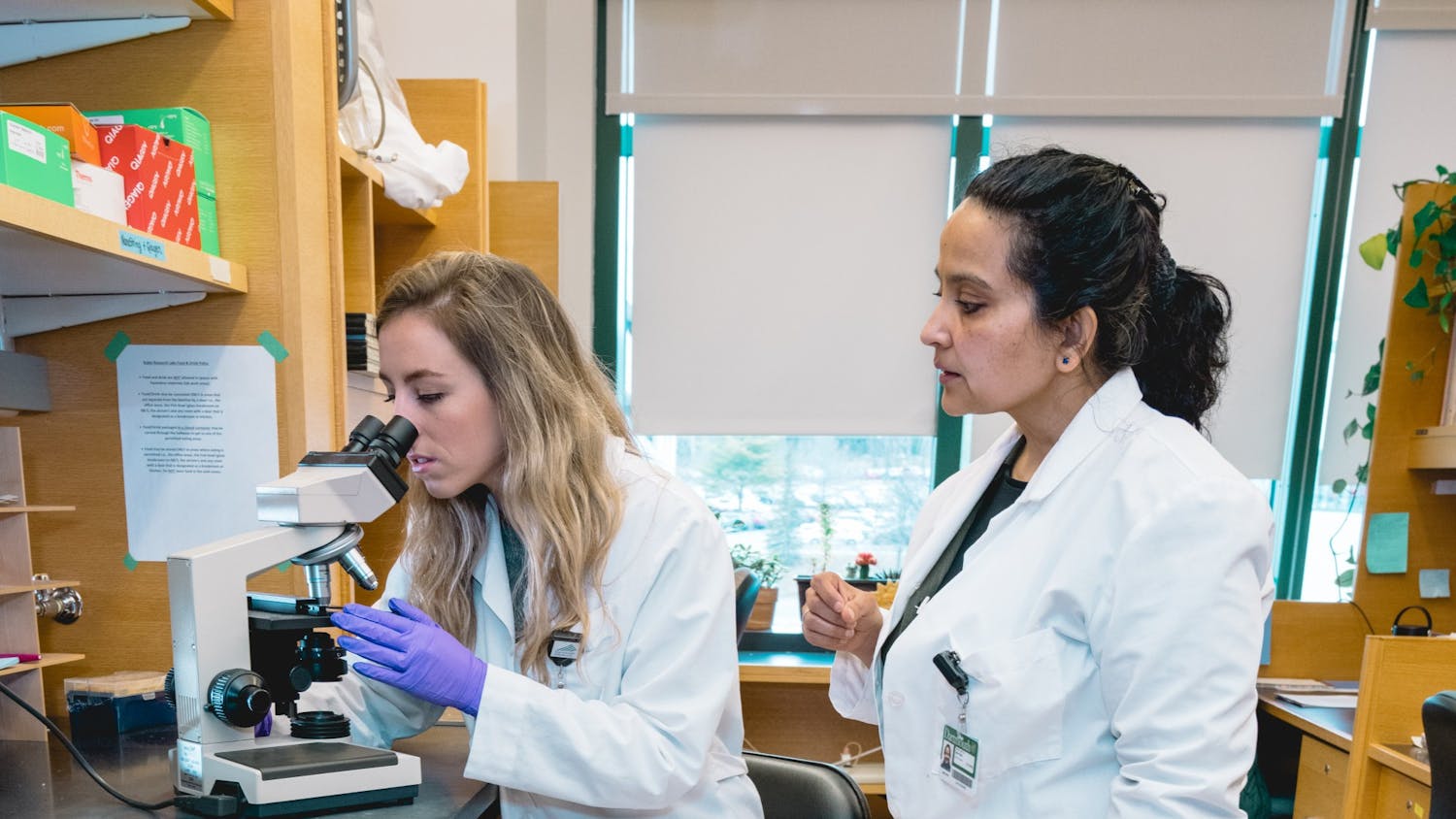At the end of 2020, the Magnuson Center for Entrepreneurship partnered with the Norris Cotton Cancer Center at Dartmouth-Hitchcock Medical Center to launch the Dartmouth Innovations Accelerator for Cancer, an initiative seeking to reduce the time it takes for cancer therapies to come to market. Teams accepted into the Accelerator took a 10-week course in drug and medical device product development. Following the course, each team developed a pitch for their cancer-related innovation, and an external review panel decided which teams were ready to receive funding for their innovation.
In its first year, the Accelerator has attracted 17 research teams consisting of 41 faculty and student members hailing from DHMC as well as the College, with strong representation from the Geisel School of Medicine, the Thayer School of Engineering and various undergraduate science departments. The team that won top prize was led by Geisel neurology professor Arti Gaur and developed a novel treatment for glioma, a type of brain cancer.
The teams’ innovations ranged from cancer therapeutics to diagnostics, and projects ranged from nascent ideas to advanced prototypes. Senior business development manager at Dartmouth’s Technology Transfer Office Barry Schweitzer ’82, who helped organize the Accelerator, was impressed by the dedication of the teams.
“I was just blown away by the interest level and the work that the teams put in,” Schweitzer said.
Program manager for startup support at the Magnuson Center Lidia Schoonenberg, who also helped organize the Accelerator, said that the main goal of the program is to make sure that more Dartmouth innovations reach patients. Another central component of the program was the cash prizes awarded to the winning teams, which aimed to help move early-stage research projects to commercialization.
According to Schweitzer, to help accomplish these goals, all teams took a ten-week course given by medical device companies Simbex and Caldera Medical on drug and MedTech development that ran from January to March. At the end of this course, teams gave a pitch to an external review board of biotech executives and venture capitalists, which then selected a group to receive the $300,000 Venture Development Award, one to receive the $100,000 Early Stage Project Award and one to receive the $50,000 Quinn Innovation Award. According to Schweitzer, the Accelerator will open for applications again next fall, and eventually, the program may extend beyond cancer and into other areas of entrepreneurship at Dartmouth.
The team that won the top prize, led by Gaur, developed a novel small molecule therapeutic to treat high-grade glioma, a type of brain cancer. According to the team’s project summary, high-grade glioma is extremely dangerous, with a median survival of only 14 months and a five-year survival rate of under 5%. Schoonenberg noted that Gaur’s team stood out for their “incredible proof of concept for their innovation with respect to glioma.”
Gaur said that high grade glioma develops in men about 1.6 times more than it develops in women, but this gap narrows after women hit menopause, indicating that female sex hormones like estrogen — which drop in quantity after menopause begins — probably protect against this cancer. However, estrogen is quite toxic, so in order to harness the protective effects of estrogen while minimizing toxicity, Gaur and her team decided to target a specific hormone receptor for estrogen — estrogen receptor β — that suppresses tumor growth and is expressed on gliomas.
According to Gaur, the team she led encountered three main issues while developing this therapeutic.
First, a high degree of molecular and cellular differences among tumors of different patients, Gaur said, made it difficult for the team to identify a common receptor for the treatment to target.
“It’s very difficult to target something if you don’t know what you’re targeting,” Gaur said.
Secondly, because the blood-brain barrier blocks most compounds from getting through, reaching cancer cells in the brain presented a major hurdle. While developing a compound that could get through proved difficult, Gaur and her team ultimately came up with a therapy that can penetrate the brain 85% of the time — a significant improvement from current glioma therapies, some of which only penetrate the brain about 20% of the time.
Third, almost all chemotherapies are very toxic. According to Gaur, nearly 50% of cancer patients die from these treatments, not the actual cancer. It is difficult to cure cancer cells without destroying healthy cells in the process.
“I can cure cancer using bleach,” Gaur said, adding that the difficult part is making sure that the therapeutic doesn’t start killing healthy cells.
For Gaur, making sure this therapeutic actually reaches patients is extremely important. Gaur said her goal isn’t to write another research paper — it’s to save patients’ lives.
“I’m not doing this science to get another ‘Nature’ paper; I’m doing it so that some poor patient’s life can be saved,” Gaur said. “Until we know exactly what a patient wants, and we start implementing it as early as possible, the science is useless.”
Gaur and the graduate students on her team, Divya Ravi GR’24 and Jordan Isaacs GR’24, explained that their team will use the prize that they won from the Accelerator to fund larger-scale studies involving a second animal species and to gather more data on toxicology. Their therapeutic compound has been studied in human patient samples and mouse models, but second species studies will allow the team to test whether their compound is safe and effective in another type of animal. Isaacs explained that this data is necessary for them to gather before they submit an investigational new drug application to the Food and Drug Administration.
“We joined the Accelerator in the hopes of receiving some funding to bring our new drug to clinical trials, because it’s a very cost-prohibitive endeavor,” Isaacs said.
All three members of the team said they took a lot of value out of being a part of the Innovations Accelerator.
“My experience was fantastic,” Isaacs said. “I’m really interested in the entrepreneurial innovation space, and so it was just a great experience on that front to kind of see what it takes to bring an academic invention to commercialization.”



